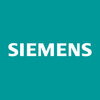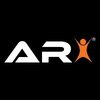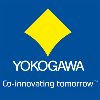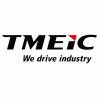


i
Johnson
Controls
Work with us
![]()
Filter interviews by
Johnson Controls Graduate Engineer Trainee (Get) Interview Questions and Answers for Freshers
30 Interview questions
Transistor is a semiconductor device used for amplification and switching of electronic signals.
Transistor is made up of three layers of semiconductor material - P-type, N-type, and P-type.
It has three terminals - emitter, base, and collector.
Transistor can be used as an amplifier to increase the strength of a weak signal.
It can also be used as a switch to turn a circuit on or off.
Transistors are used in various e...
VFD stands for Variable Frequency Drive which is used to control the speed of an induction motor.
VFD is an electronic device that controls the frequency and voltage supplied to an induction motor.
It can be used to vary the speed of the motor as per the requirement.
VFDs are commonly used in industries to save energy and improve efficiency.
They can also be used to reduce mechanical stress on the motor and increase i...
PID controller is a feedback control mechanism used in engineering to regulate a system's output.
PID stands for Proportional-Integral-Derivative
It continuously calculates an error value as the difference between a desired setpoint and a measured process variable
The controller then adjusts the output to minimize the error
Proportional control responds to the current error, integral control responds to the error over...
Explanation of different terminals of BJT
BJT has three terminals: emitter, base, and collector
Emitter is heavily doped and has the highest concentration of charge carriers
Base is lightly doped and controls the flow of charge carriers from emitter to collector
Collector is moderately doped and collects the charge carriers from the base
The direction of current flow is from emitter to collector
Universal Gates are gates that can be used to implement any logic function. OR gate can be drawn from a Universal Gate.
Universal Gates include NAND and NOR gates
NAND and NOR gates can be used to implement any logic function
OR gate can be drawn from a NAND gate by connecting both inputs together
OR gate can be drawn from a NOR gate by connecting both inputs together and inverting the output
Counters are used to count the number of clock pulses and generate output signals. Shift registers are used to store and shift data.
Counters are sequential circuits that count the number of clock pulses and generate output signals.
They can be used in applications such as frequency dividers, event counters, and timers.
Shift registers are used to store and shift data in a serial manner.
They can be used in applicatio...
Johnson Counter is a digital circuit that counts in a cyclic pattern.
It is a type of shift register with feedback
It has a sequence of n bits that cycle through 2^n-1 states
It is used in digital clocks, frequency dividers, and memory address decoding
Example: 4-bit Johnson counter has a sequence of 0001, 0010, 0100, 1000, 0001, ...
It can be implemented using D flip-flops or JK flip-flops
Draw XOR gate truth table
XOR gate has two inputs and one output
Output is 1 only if inputs are different
Truth table: 0 XOR 0 = 0, 0 XOR 1 = 1, 1 XOR 0 = 1, 1 XOR 1 = 0
A PID controller is a feedback control loop that calculates an error value as the difference between a desired setpoint and a measured process variable.
The block diagram of a PID controller consists of three main components: the proportional, integral, and derivative terms.
The proportional term produces an output that is proportional to the error signal.
The integral term produces an output that is proportional to ...
8085 has 5 interrupts. TRAP, RST 7.5, RST 6.5, RST 5.5, INTR
8085 has 5 interrupts: TRAP, RST 7.5, RST 6.5, RST 5.5, INTR
TRAP is a non-maskable interrupt
RST 7.5, RST 6.5, and RST 5.5 are maskable interrupts
INTR is a maskable interrupt and can be enabled or disabled by setting the interrupt enable flip-flop
Interrupts are used to handle external events and improve the efficiency of the system
Johnson Controls Graduate Engineer Trainee (Get) Interview Experiences for Freshers
13 interviews found
I applied via LinkedIn and was interviewed in Sep 2024. There were 2 interview rounds.
All questions are good along with tricky
(2 Questions)
- Q1. What are your final year projects
- Ans.
My final year project is a mobile application for tracking and managing personal finances.
Developing a user-friendly interface for inputting expenses and income
Implementing data visualization tools to track spending habits
Incorporating budgeting features to help users manage their finances effectively
- Q2. Introduce yourself
- Ans.
I am a passionate engineering graduate with a strong background in software development and a keen interest in innovative technologies.
Graduated with a degree in Computer Engineering from XYZ University.
Completed internships at ABC Tech, where I developed a mobile application that improved user engagement by 30%.
Participated in hackathons, winning first place for a project that utilized AI to optimize logistics.
Skilled...
Interview Preparation Tips
I applied via Campus Placement and was interviewed in Oct 2022. There were 3 interview rounds.

Before apptitude round you will asked to select your stream, so as I'm from ECE I've selected ECE. So questions will be related to that only. In 60 min there were 75 MCQ questions with very bad website UI, So don't get shocked if you see no line breaks in code.
Question are from these domain:
- Microprocessor/Microcontroller (15 questions)
- Digital Electronics (10 questions)
- Analog electronic and Network Theory (10 questions)
- OOPs and psuedocode (15 questions)
- General Apptitude and Logical reasoning (15 questions)
- other basic ECE and CSE questions ( 10 questions)
Out of 70 students they selected only 6 from our college. Try to attempt more than 65 questions to get selected in this round. Fortunately I was selected in apptitude round.
(18 Questions)
- Q1. So before the technical Round they will have 1 hr pre placement talks. After that individual interview will start. If You're from ECE you will strictly be interviewed from ECE subjects only. Partially ther...
- Q2. Different between latches and flip flop
- Q3. Draw Jhonson Counter and explain its working?
- Ans.
Johnson Counter is a digital circuit that counts in a cyclic pattern.
It is a type of shift register with feedback
It has a sequence of n bits that cycle through 2^n-1 states
It is used in digital clocks, frequency dividers, and memory address decoding
Example: 4-bit Johnson counter has a sequence of 0001, 0010, 0100, 1000, 0001, ...
It can be implemented using D flip-flops or JK flip-flops
- Q4. What is the use of counter and How it is different from Shift registers.
- Ans.
Counters are used to count the number of clock pulses and generate output signals. Shift registers are used to store and shift data.
Counters are sequential circuits that count the number of clock pulses and generate output signals.
They can be used in applications such as frequency dividers, event counters, and timers.
Shift registers are used to store and shift data in a serial manner.
They can be used in applications su...
- Q5. Draw XOR gate write truth table
- Q6. What are Universal Gates and draw OR gate from one Universal Gate?
- Q7. Draw block diagram of PID controller
- Q8. Find equivalent resistance of the given circuit
- Ans.
Find equivalent resistance of the given circuit
Identify series and parallel connections
Use Ohm's law to calculate individual resistances
Combine resistances using series and parallel rules
Final answer should be in Ohms
- Q9. Why 8085 is called 8 bit processor
- Q10. No of intrupts in 8085. Explain all
- Ans.
8085 has 5 interrupts. TRAP, RST 7.5, RST 6.5, RST 5.5, INTR
8085 has 5 interrupts: TRAP, RST 7.5, RST 6.5, RST 5.5, INTR
TRAP is a non-maskable interrupt
RST 7.5, RST 6.5, and RST 5.5 are maskable interrupts
INTR is a maskable interrupt and can be enabled or disabled by setting the interrupt enable flip-flop
Interrupts are used to handle external events and improve the efficiency of the system
- Q11. Difference between Microprocessor and microcontroller
- Ans.
Microprocessor is a single chip CPU while microcontroller is a complete computer on a chip.
Microprocessor is used in general purpose computing while microcontroller is used in embedded systems.
Microprocessor has limited on-chip peripherals while microcontroller has on-chip peripherals like timers, ADC, etc.
Microprocessor requires external memory and peripherals while microcontroller has them on-chip.
Examples of micropr...
- Q12. Different flags in 8086 and its high and low condition
- Ans.
Flags in 8086 and their high and low conditions
8086 has 9 flags: Carry, Parity, Auxiliary Carry, Zero, Sign, Trap, Interrupt, Direction, Overflow
Flags can be set or reset based on the result of arithmetic and logical operations
High condition means the flag is set, while low condition means the flag is reset
- Q13. Draw Npn aur pnp transistor
- Ans.
NPN and PNP transistors are drawn using three layers of semiconductor material.
Draw two vertical lines representing the two outer layers of the transistor.
Draw a diagonal line connecting the top of the left line to the bottom of the right line for NPN transistor.
Draw a diagonal line connecting the top of the right line to the bottom of the left line for PNP transistor.
Add arrows to indicate the direction of current flo...
- Q14. Draw and explain different terminal of BJT
- Ans.
Explanation of different terminals of BJT
BJT has three terminals: emitter, base, and collector
Emitter is heavily doped and has the highest concentration of charge carriers
Base is lightly doped and controls the flow of charge carriers from emitter to collector
Collector is moderately doped and collects the charge carriers from the base
The direction of current flow is from emitter to collector
- Q15. Different operating region of BJT
- Ans.
BJT has three operating regions: active, saturation, and cutoff.
Active region: both junctions are forward-biased.
Saturation region: both junctions are reverse-biased.
Cutoff region: base-emitter junction is reverse-biased and base-collector junction is forward-biased.
BJT operates as an amplifier in the active region.
BJT operates as a switch in the saturation and cutoff regions.
- Q16. Difference between BJT and FET
- Ans.
BJT is a current-controlled device while FET is a voltage-controlled device.
BJT stands for Bipolar Junction Transistor while FET stands for Field Effect Transistor.
BJT has a higher gain and faster switching speed than FET.
FET has a higher input impedance and lower noise than BJT.
BJT is commonly used in low-power applications while FET is commonly used in high-power applications.
Examples of BJT include NPN and PNP trans...
- Q17. Different analog to digital conversation techniques
- Ans.
Analog to digital conversion techniques include pulse code modulation, delta modulation, and sigma-delta modulation.
Pulse code modulation (PCM) samples the analog signal at regular intervals and quantizes each sample into a binary code.
Delta modulation (DM) approximates the slope of the analog signal and encodes the difference between the approximated value and the actual value.
Sigma-delta modulation (SDM) oversamples ...
- Q18. This question was from my project on Robotics arm: 1. Explain Block diagram of your Robotics arm 2. Why are you using servo motor on your robotics arm not other motor and different types of motor
Interview Preparation Tips
Best of Luck. 🤟🤟
Skills evaluated in this interview
I applied via Campus Placement and was interviewed in Jun 2022. There were 4 interview rounds.
It was aptitude plus technical test which was easy and very basic questions were asked
(5 Questions)
- Q1. Interview was easy for me as I have good technical knowledge. But it was really hard for others
- Q2. Explain PID controller
- Ans.
PID controller is a feedback control mechanism used in engineering to regulate a system's output.
PID stands for Proportional-Integral-Derivative
It continuously calculates an error value as the difference between a desired setpoint and a measured process variable
The controller then adjusts the output to minimize the error
Proportional control responds to the current error, integral control responds to the error over time...
- Q3. Where do you see yourself in next 5 years
- Q4. What is transistor its use and working
- Ans.
Transistor is a semiconductor device used for amplification and switching of electronic signals.
Transistor is made up of three layers of semiconductor material - P-type, N-type, and P-type.
It has three terminals - emitter, base, and collector.
Transistor can be used as an amplifier to increase the strength of a weak signal.
It can also be used as a switch to turn a circuit on or off.
Transistors are used in various electr...
- Q5. Projects related questions
(4 Questions)
- Q1. What is VFD in Induction Motor
- Ans.
VFD stands for Variable Frequency Drive which is used to control the speed of an induction motor.
VFD is an electronic device that controls the frequency and voltage supplied to an induction motor.
It can be used to vary the speed of the motor as per the requirement.
VFDs are commonly used in industries to save energy and improve efficiency.
They can also be used to reduce mechanical stress on the motor and increase its li...
- Q2. Types of Induction Motor
- Ans.
There are two main types of induction motors: squirrel cage induction motors and wound rotor induction motors.
Squirrel cage induction motors have a simple and robust construction, with a rotor consisting of bars shorted at both ends.
Wound rotor induction motors have a rotor with three windings connected to slip rings, allowing external resistors to be connected for improved control.
Other types of induction motors inclu...
- Q3. Types of Capacitors and Dielectric
- Ans.
Capacitors are electronic components that store energy in an electric field. There are different types of capacitors based on their dielectric material.
Types of capacitors include ceramic, electrolytic, tantalum, film, and paper capacitors.
Dielectric materials used in capacitors include ceramic, aluminum oxide, tantalum pentoxide, polyester, and polypropylene.
Ceramic capacitors are commonly used in high-frequency circu...
- Q4. Power Systems basics
(2 Questions)
- Q1. Tell me about yourself
- Q2. How your friends will describe you in one word
Interview Preparation Tips
- Control System Design
It included basics of physics mathematics and few quant questions
(1 Question)
- Q1. JCI have 2 rounds of interview L1 and LA L1 is basic technical round includes a strong introduction of yourself and deep knowledge of projects you have worked on (if related to automation) basics on the su...
(1 Question)
- Q1. L2 was deep technical interview wherein they focus on the pratical knowledge of industry more over on sensors, building and industrial automation
Interview Preparation Tips
Aptitude test was quite easy as it included all the basics of physics and mathematics and few questions on sensors
(2 Questions)
- Q1. Round 2 was technical interview 1
- Q2. Introduce yourself Projects made in engineering Detailing about project Questions on building and Industrial automation Various sensors and their applications in day to day life Valves Controllers
(1 Question)
- Q1. Technical round was deep and detailing in core subjects like sensors and their applications in industries
Interview Preparation Tips
I applied via Walk-in and was interviewed before Sep 2022. There were 3 interview rounds.

(2 Questions)
- Q1. Introduce about your self
- Q2. What is Silicon Controlled Rectifier
- Ans.
A Silicon Controlled Rectifier (SCR) is a type of semiconductor device used for controlling electric power.
SCR is a three-terminal device that acts as a switch, conducting current only when a specific gate signal is applied.
It is commonly used in power control applications such as motor speed control, lighting control, and power supply regulation.
SCRs are known for their high reliability, long lifespan, and ability to ...
(1 Question)
- Q1. Tell us about yourself
Interview Preparation Tips
I applied via Campus Placement and was interviewed before Jan 2021. There were 3 interview rounds.
Interview Questionnaire
1 Question
- Q1. Questions from sensor and transducers, your project in detail,control strategies were asked.
Interview Preparation Tips
I applied via Campus Placement
Interview Questionnaire
5 Questions
- Q1. Basic design procedure
- Q2. Things you look in moulds
- Ans.
I look for quality, durability, and precision in moulds.
Quality of the material used in the mould
Durability of the mould to withstand repeated use
Precision in the mould's design and manufacturing process
Ability to produce consistent and accurate parts
Ease of maintenance and repair
Compatibility with the intended manufacturing process
- Q3. Press tools
- Q4. Heat transfer
- Q5. Som and mechanics
Interview Preparation Tips
Experience: aptitude was not so easy as it consists of quantative logical and technical.
10 questions were on technical mainly focused on mechanics , som and machine design. if your basics are clr then u can easily crack the apti.
Tips: make yourself clr . and mark the correct answers within 1 min. if u r comfident that you can solve 40 quest in 60 min then do that instead of taking tenaion of solving all problems.
Duration: 60 minutes
Total Questions: 60
Round: CAD MODEL TEST
Experience: test was based on catia and nx. you have to make a model frm dummy model by using commands. then your model should b free from the orignal one. we call it as breaking the linkage.
Tips: whatever you do after every step save it. and then zee weather its breaking the link or note. on every step it woill reduce your labour.
Round: Technical Interview
Experience: anyone can read it frm machine design book of rs khurmi
Tips: read the basic concepts daily. make yourself cear in every doubt that occours in your mind
Round: HR Interview
Tips: be confidend. be professional.
General Tips: be prepared for any question. have energy in you
it should look in your face. b smart.
Skills: som, gd&t symbols, jigs and fixtures, press tools, moulds, catia
College Name: BECHALOR OF ENGINEERING, jawaharlal nehru engineering college
Motivation: good environment. work friendly nature.
Funny Moments: in hr interview the asked me about "how long will you stay in johnson?"
i took a pause and said sir i was planning for my retirement plan in your firm.
Interview Preparation Tips
Experience: I am M tech Design Engineering student at MNNIT Allahabad.
Johnson Controls came to our campus first time.They have Written test then technical interview and after that HR+Technical Interview.They set the cutoff of 7 CGPA for the written test.After getting shortlisted i appeared for the online exam.The exam consist of technical +aptitude+English. Questions were easy theoretical based and mainly from fluid hmt thermodynamics.English questions were also easy.
Tips: Time to complete the test will be sufficient also in there exam portal there is no back option you can either skip or select and move forward option but nothing to worry .The question which you will skip will come back at the end of the exam you can attempt them then if you want.
Round: Technical Interview
Experience: In Technical interview 3 panel consisting of 1 interviewer were made.Students are sent according to there brach in respective panel.In interview my interviewer ask mainly RAC Thermodynamics basics also some discussion about the company were there.He also ask me details about my thesis work.
Tips: Interview is easy they are mainly focusing on your Communication skill and expression.Technical is not that hard.
Round: HR Interview
Experience: In HR+Technical interview the shortlisted student from the technical round are interviewed.Panel consist of 5 people and they ask about your future perspective wrt company what you think about there company your role in there company .They also try to put some difficult question but answer them confidently and politely.Technical question along with HR questions were asked.
General Tips: Visit there website learn about company and there projects in india.focus on your Communication technical is not that much hard.
Skill Tips: Speak clearly and fluently.For technical part dont take much pressure.As for mechanical engineering students mainly hmt fluid rac are asked.Please look into there website and see there Global ranking ,there achievements and there projects in india it will help you in HR round .
Skills: Technical Skill And Speaking Skill
College Name: NIT ALLAHABAD
I appeared for an interview in Aug 2016.
Interview Preparation Tips
Experience: The aptitute level of JC was preety high. The questions were tough comprising of questions from quantitative and logical reasoning.
Tips: Practise hard on aptitude coz this is the most important round for this company during on campus placements
Round: Technical Interview
Experience: The aptitute level of JC was preety high. The questions were tough comprising of questions from quantitative and logical reasoning.
Tips: Practise hard on aptitude coz this is the most important round for this company during on campus placements
Round: Technical + HR Interview
Experience: This round was to test your basic programming and problem solving skills.
Tips: You should be strong in your basic core sbjcts and very good at programming approach to solve problems
College Name: Netaji Subhash Engineering College
What people are saying about Johnson Controls





Johnson Controls Interview FAQs
Some of the top questions asked at the Johnson Controls Graduate Engineer Trainee (Get) interview for freshers -
Tell us how to improve this page.
Johnson Controls Interviews By Designations
- Johnson Controls Graduate Engineer Trainee (Get) Interview Questions
- Johnson Controls Assistant Manager Interview Questions
- Johnson Controls Applications Engineer Interview Questions
- Johnson Controls Deputy Manager Interview Questions
- Johnson Controls Software Engineer Interview Questions
- Johnson Controls Senior Executive Interview Questions
- Johnson Controls Analyst Interview Questions
- Johnson Controls Senior Design Engineer Interview Questions
- Show more
Overall Interview Experience Rating
based on 3 interview experiences
Difficulty level
Duration
Graduate Engineer Trainee (Get) Interview Questions from Similar Companies
Johnson Controls Graduate Engineer Trainee (Get) Reviews and Ratings
based on 12 reviews
Rating in categories
|
Assistant Manager
1.3k
salaries
| ₹5 L/yr - ₹12.1 L/yr |
|
Senior Executive
1.2k
salaries
| ₹3.9 L/yr - ₹9 L/yr |
|
Deputy Manager
756
salaries
| ₹7.8 L/yr - ₹13.5 L/yr |
|
Manager
375
salaries
| ₹10 L/yr - ₹16.5 L/yr |
|
Senior Analyst
364
salaries
| ₹5 L/yr - ₹10.8 L/yr |

Siemens

Schneider Electric

Honeywell Automation

Rockwell Automation
- Home >
- Interviews >
- Johnson Controls Interview Questions >
- Johnson Controls Interview Questions for Fresher













